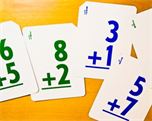 In the age of technology is it still important for students to know their basic math facts?
In the age of technology is it still important for students to know their basic math facts?
Calculators and apps seem like an easier alternative. But would we say that reading is no longer essential because technology now provides us with software that can read things for us? Of course not!
Just as in reading, knowing your basics helps to propel you. Higher order math becomes nearly impossible without knowing basic math facts. Having basic math fact fluency is the same as being a fluent reader. The more secure a child is with basic math facts the easier it is to tackle algebra and calculus down the road.
Being secure with basic math facts allows you to figure out sales tax on a bill, know what an item will cost when on sale, and be ready to negotiate that salary when applying for the dream job.
Ways to help your child learn basic math facts:
- Start out using a number grid when talking about math facts
- Make fact families (1+9=10, 5+5=10, 6+4=10, etc)
- Use manipulatives to help represent new information
 If a child is struggling in school and a teacher says to give them extra time to practice in their toughest subject area, where can you find the extra time in a busy family schedule?
If a child is struggling in school and a teacher says to give them extra time to practice in their toughest subject area, where can you find the extra time in a busy family schedule? Did you know that you and your child each have a specific style when it comes to learning new information? This is called your learning style. Your learning style has guided you in learning information from grade school to grad school. Learning style refers to the various ways you learn new information and figure things out. Typically there are 4 different learning styles:
Did you know that you and your child each have a specific style when it comes to learning new information? This is called your learning style. Your learning style has guided you in learning information from grade school to grad school. Learning style refers to the various ways you learn new information and figure things out. Typically there are 4 different learning styles:




